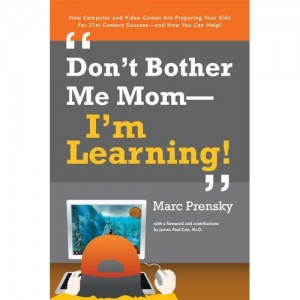
by Annie | Sep 3, 2010 | Game Design
Multiple choice tests have been a classroom assessment staple for decades. I remember many years of listening to teachers drone on about filling in the circle completely and making my mark heavy and dark. But what exactly do multiple choice assessments test? Process of elimination? Best guess strategies? Certainly not actual real world knowledge, right? This is exactly what the U.S. plans to overhaul within the next few years. Secretary Arne Duncan announced on Thursday that 44 states will share $330 million to work with university professors and testing experts to design a new series of assessments by the 2014-15 school year. Instead of testing students’ abilities to find trick answers or eliminate wrong ones, these new tests will require students to design experiments, manipulate parameters, and collect and analyze data. Sounds a little bit more like the real world, eh? Not only that, the new tests will be computerized, so teachers will receive instant feedback on student progress and misunderstandings and will be able to use that information to better tailor lesson plans. At least, that’s the hope. So where do games come into all of this? Essentially, if the new tests are well designed, they should resemble a series of games. If you think about it, each game you play is essentially a test. You build your skills through conquering obstacles, then use those skills to reach an objective. Similarly, students will “level up” in class, then use the assessments to manipulate virtual variables, testing their skills in order to achieve a goal. For young people today, games are fun, and school is not. Thus, the more we...

by Annie | Aug 27, 2010 | Game Design
Most people who know me well are privy to my love of math and logic puzzles. I do sudoku puzzles in my spare time and take huge books of logic puzzles with me on long flights. So when it was time to design a board game, what did I do? You guessed it – a math game. Math was by far my favorite subject to teach during my years in the classroom. Math is built on a framework of simple rules that anyone can grasp. Throw in a little practice, and you’ll be a math whiz in no time. I had students who started the year barely able to multiply 2×2. By the end, most were able to recite the times tables through 9 and complete fairly complicated long division problems. Now, one thing you should know is that I didn’t set out to create an educational board game. Sure, I came to VFS to study game design in an effort to eventually create educational games, but I didn’t feel the need to combine gaming and education right away. However, it caught up with me anyway. I started out with an idea involving dice. You roll the dice, then mark a multiple of that number on a grid in an effort to get five numbers in a row. That got boring pretty fast. Next, I went a completely different route. I tried to come up with a spider web game in which players build webs and then set traps for each other while trying to capture prey. That one was a little too complicated to get just right. After...
by Annie | Aug 22, 2010 | Game Design
With all the illicit acts available to players within the realm of Grand Theft Auto, one young man has found a way to use the game to perform good deeds. If you have a second, this article is definitely worth reading: My Four-Year-Old Son Plays Grand Theft...
by Annie | Aug 2, 2010 | Game Design
Since the field of game design is still in its infancy stage, things change fast and often. Games were once created by small teams of people with a passion for gaming but no formal training. Now, more and more, game designers, programmers, and artists are entering the field with years of schooling and experience. Soon, students will have access to game design training as early as middle school. Baltimore County Public Schools (BCPS) just announced plans to incorporate video game development education into its curriculum. To prepare teachers for the program, BCPS will implement a series of “gamification boot camps” to educate teachers on the technology behind video games. This technique of incorporating game technology with STEM (science, technology, engineering, and mathematics) is quickly catching on, increasing student engagement and interest in core subject areas. Be The Game, a game design training curriculum for high school students, was developed by the Institute of Urban Game Design in 2005 and has rapidly spread from its original school in Washington, DC, to six schools across the US. This new trend may be yet another game changer for the field of game design. As access to training becomes more prevalent, more indie games created by younger designers will soon hit the market. We may not have highly effective educational games just yet, but we do have highly motivated students ready to create them. Let the games...

by Annie | Jul 20, 2010 | Game Design
Imagine you’re a parent (this is less of a stretch for those of you who already have children). Your child is growing up in a world in which people use cell phones to check email and rely on GPS narration to guide them through unfamiliar territory. And of course, the ubiquity of computer and video games is unavoidable. So, do you let your kids play them? Let’s face it. The game industry is growing. Computer and video games are published every day. Story lines are becoming more complicated, and gameplay mechanics are changing. Often, toddlers as young as 2 years old play computer games or iPhone games on a regular basis. Isn’t this harmful? According to Marc Prensky, the contrary is true. Kids can actually learn more positive and useful things from computer and video games than from school, depending on how teachers and parents moderate kids’ gameplay experiences. Think about how much attention and energy kids devote to computer and video games. Now compare that to the attention and energy they put forth in the classroom. I can assure you that there are as many kids catching Z’s in the classroom as there were back in the “old days” before classrooms had interactive white boards and computers. But why? What’s the draw of video games? For one, kids, just like adults, love challenges. Give a kid an overly easy assignment, and you’ll catch them throwing paper airplanes soon after, counting down the minutes until recess. Give a kid a challenging assignment with the proper tools and scaffolding to help them complete it, and you get a focused and...




